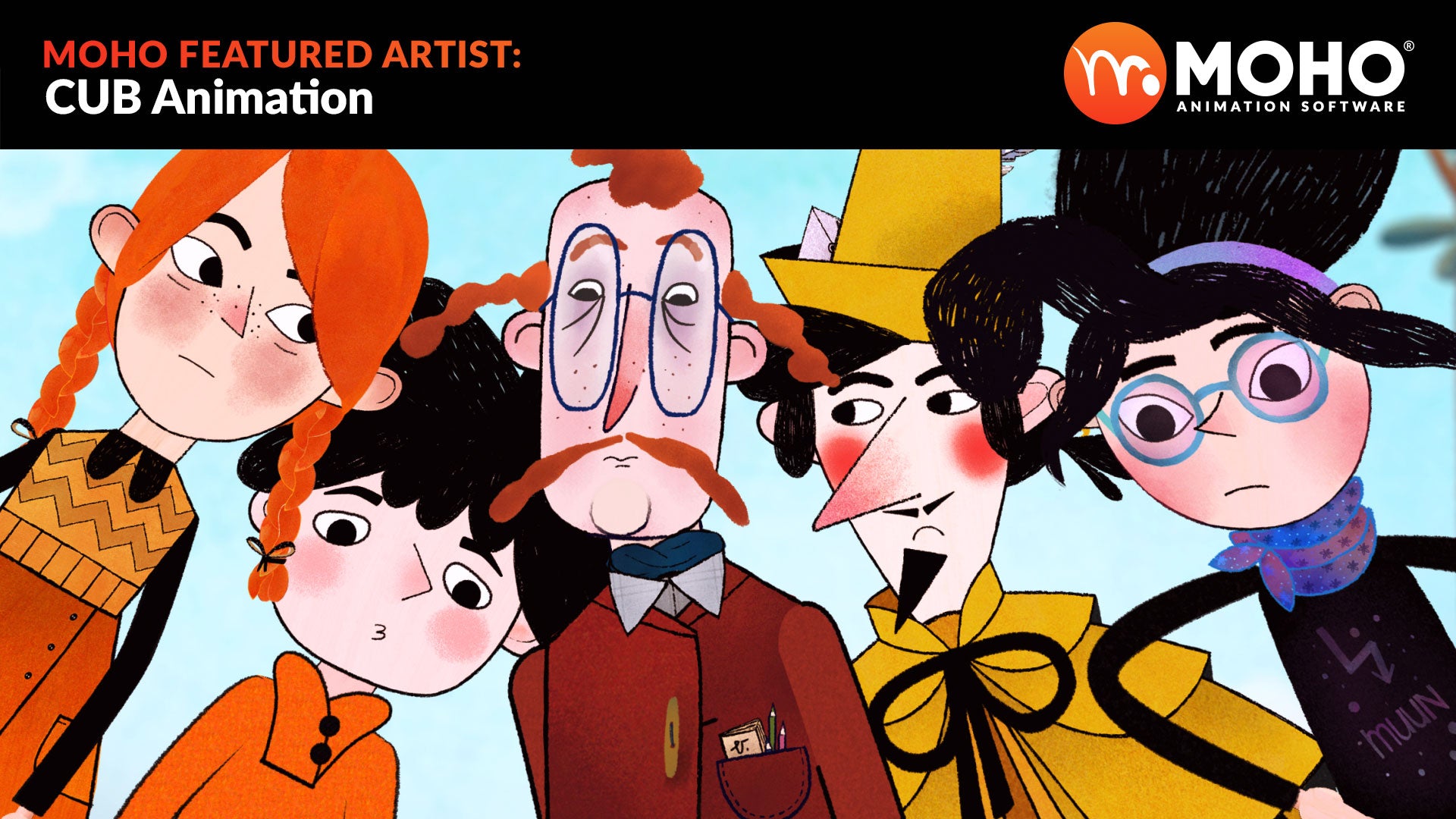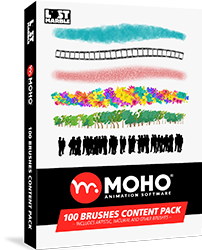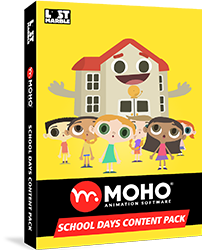
Moho Featured Artist: CUB Animation
Mario Quinones @
This week our Moho Featured Artist is CUB Animation and their children TV series “A door to Othertown'🔥 This Hungarian project was based on the homonymous children's book written by Andrea Magyari, and it was all animated with Moho! ✨
Tell us about yourself
Hi, I’m Bálint Gelley, I graduated at MOME Anim, Budapest in 2012. I’m a director/ producer at CUB Animation, a company I founded with Bella Szederkényi in 2015. Our studio is led by a common obsession with telling stories with the unique tools of animation and the power of young talents. We are creating kids’ content with a special Central-European taste and making outstanding animated shorts. We also enjoy creative commissioned works.
I’m also working as a lecturer at MOME Anim since 2016.

Where do you get inspiration?
I’d say I get most of my inspiration from books. My graduation film was an adaptation of a Hungarian short story by Ádám Bodor, and I directed a TV series called “A door to Othertown” which is based on a book by Andrea Magyari. I enjoy adaptations because it’s a way to give your interpretation of the story. When you are reading a book, there are a lot of things that are not described by the author. You, as a reader, fill in the gaps with your imagination, for example how a certain character sounds like, or what that character is wearing. When I’m directing an adaptation, I’m filling those gaps just as I do when I read, and I find this fascinating. I also get inspiration from music. I love directing music videos in my head when I hear a song I really like. For some reason, I haven’t directed a real music video yet, but I did a lot of imaginary ones. And last but not least, I find working in a creative group of people the most inspiring. That’s why I love working in CUB Animation.

What’s your hardware setup?
I’m working on a custom built PC and an iPad.

What do you like best about Moho?
I love the fact that it’s easy to learn, but it has a lot of features that you can discover by working with it. You can do multiple styles of animation, and there is no better way to make cut-out 2D in my opinion. It’s also quite fast, so ideal when there is a tight deadline. It is also very stable, which is very important for a production.

How has Moho helped you in your creative process?
I found out about Moho during my university years. In those times we had to do a lot of short films but the semester only took around three months. We usually took a lot of time developing the animatics, and in the end we had to finish the shorts very fast. So Moho was a great way to actually finish the assignments for the final exam. And since then, I stuck with it. After university, I started out as a freelance animator and I mainly worked in Moho, so naturally when we started the studio, Moho became one of our main software.

Can you talk about the “A door to Othertown" series and how it was made using Moho?
Certainly. As I mentioned before, “A door to Othertown'' is an adaptation of a successful children’s book, and we made a thirteen episode series based on it by the support of the Hungarian Media Patronage Programme, the Hungarian Film Incentive and the scholarship programme of the Hungarian Academy of Arts. Every episode is about seven minutes long, so the overall runtime of the serial is about one and a half hours. The story is about a nine years old boy Kázmér who is super creative, and his friend, a highly intelligent girl Kamilla, who go on a crazy adventure together. They jump into a strange new world when they respond to a call for help from a peculiar guy who just happened to pop out of the stove. This world is called Othertown, and it has been struck by a terrible disaster: nothing new is happening! This has some serious consequences: people are losing their sense of time and purpose in their lives. The resourceful kinds find out how to save Othertown using their special skills, and with that, they are making a difference in the real world too.
We animated the series in Moho. We used the software to mimic the traditional cut-out animation. The characters are actually drawn by hand on a lot of layers, and we built a rig out of them. There are a couple of vector shapes, usually the arms and legs of a character, but luckily it’s hard to tell the bitmap or the vector shapes apart because of Moho's brushes. This technique helped us to keep the richness of the graphical style without limiting the animation.
How has Moho improved your pipeline workflow?
Since Moho is easy to learn, a lot of young talented people could jump in the production even though they had no experience with the software. It has good integration with other softwares we use, so it makes everything quite streamlined and fast.

Where can we find you?
Our webpage is www.cubanimation.com. We also have a FB and Instagram page: https://www.facebook.com/cubanimation and https://www.instagram.com/cubanimation/
Also, you can find us on Linkedin: https://linkedin.com/company/cub-animation-studio


